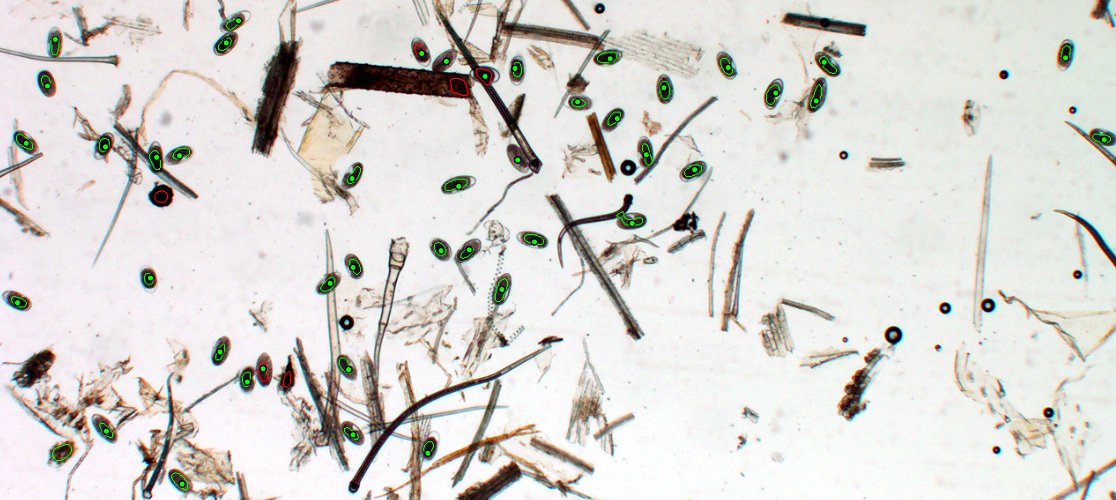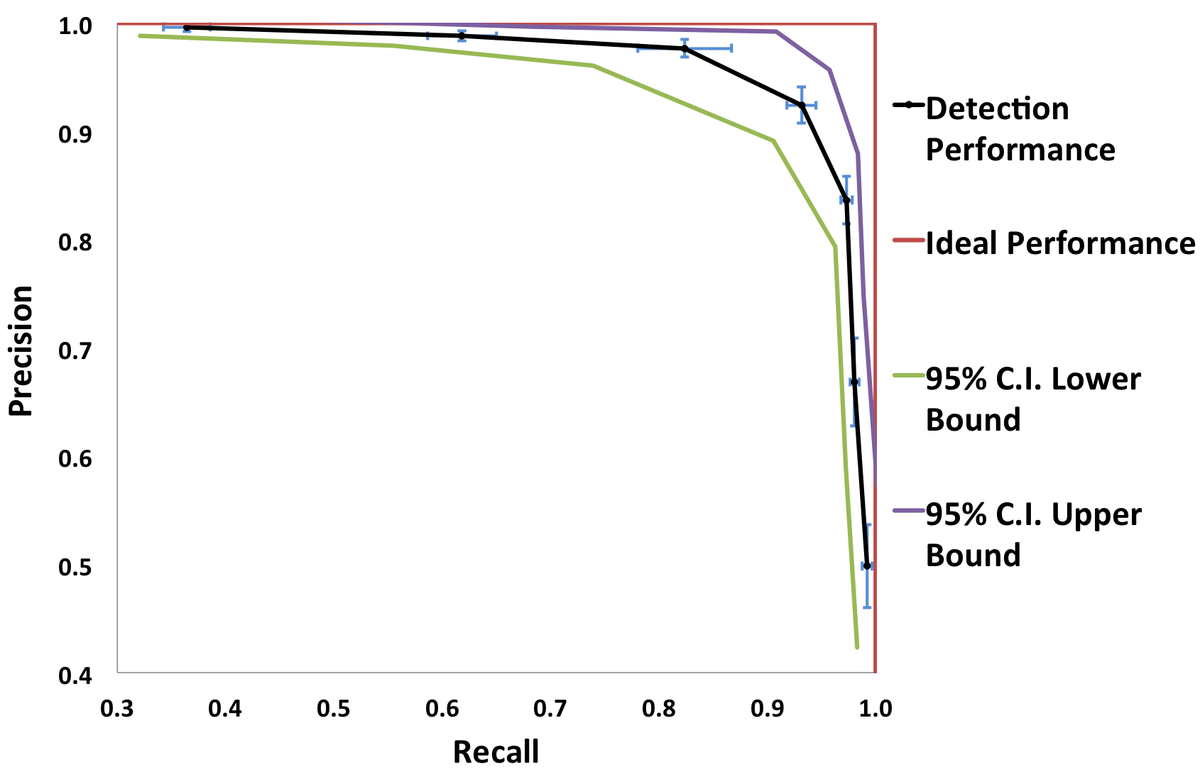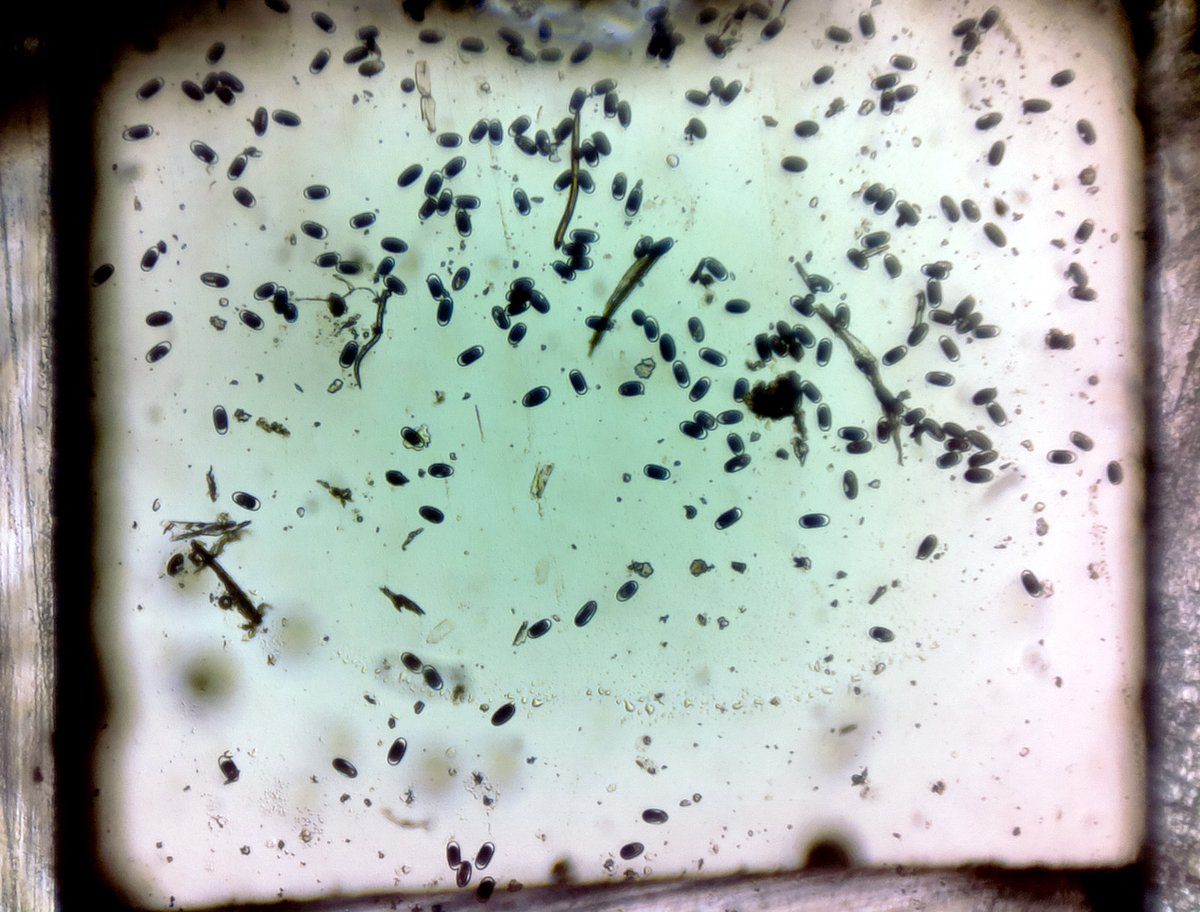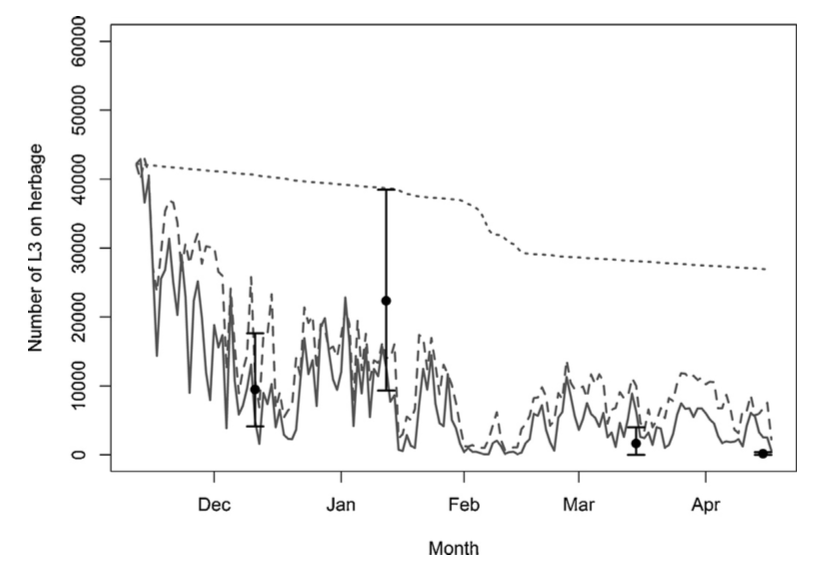Parasite Detection
Automatic diagnosis of worm infections in animals
Our system has been designed for automated egg detection from the ground up.
This makes it consistent, with statistically robust results even in the presence of faecal debris.
This creates opportunities far beyond the capabilities of manual faecal egg counting.
Image: WORMA Algorithm output. Dots represent actual ova locations, outlines indicate those eggs detected.

State-of-the-Art Performance
Advanced detection rates

The WORMA Algorithm demonstrates excellent performance, with high sensitivity and specificity.
The Algorithm quickly delivers a breakdown of the number of each species of parasite present in an image. Confidence is well characterised so that error is implicitly taken into account.
Beyond human capabilities
New differentiation techniques can distinguish similar species
We have early evidence to suggest that the WORMA Algorithm can perform beyond human abilities. It has been shown that it can distinguish H. Contortus from other Strongyles, which is of great practical importance due to the different pathology of the two. Currently, this identification is only possible by staining or culturing eggs in the lab.

Hands-off Sample Preparation
A World-first method for nematode egg isolation
WORMA's sample processing is second to none. It’s task is to isolate parasite eggs from all of the detritus present in a faecal sample, and concentrate these so that they can be viewed in a single clean image.
This is the only system worldwide with this capability, and it achieves it without human intervention. This provides significant benefits in consistency and reduction in infection risk when handling samples.
Fully Automated Process
Load samples, and let the machine do the rest
Sample Collection
The WORMA device processes a large sample size, typically an order of magnitude larger than is traditionally used.
Separation
The WORMA device mixes the required fluids and processes the sample. It isolates parasites from faecal debris and concentrates these cells for imaging.
Imaging
The WORMA device incorporates an intelligent optical instrument that delivers a high definition image to the WORMA Cloud for analysis.
Analysis
The WORMA Algorithm works in the Cloud to autonomously speciate and count the parasites in each image. Results are available from any device.

Disease Prediction
Advanced models of parasite life-cycles used for forecasting
Advanced models of roundworm life-cycles, developed at the University of Bristol, are used to forecast spikes in parasite burden. Weather forecasts, Faecal Egg Counts from WORMA and historic climate data are used to estimate parasite behaviour. This provides an early-warning system for animal owners.